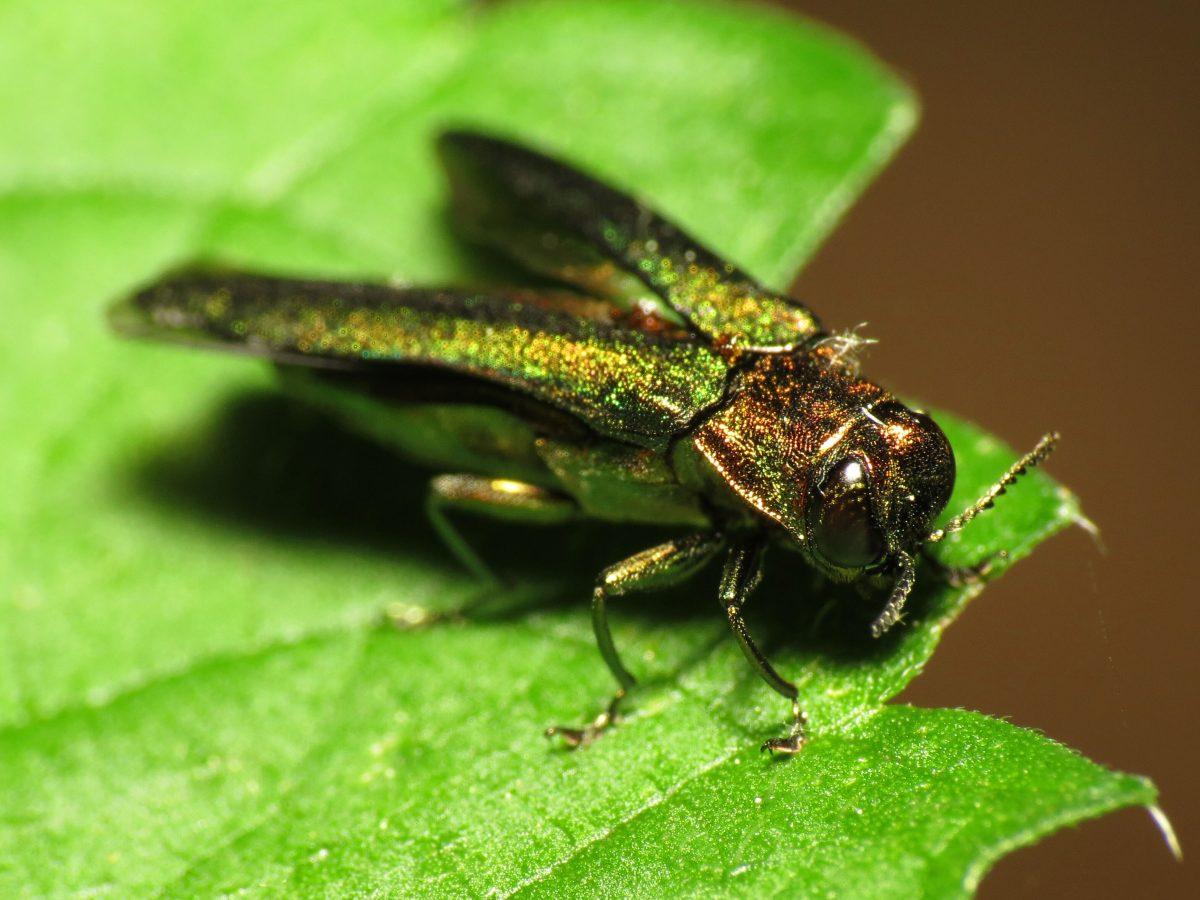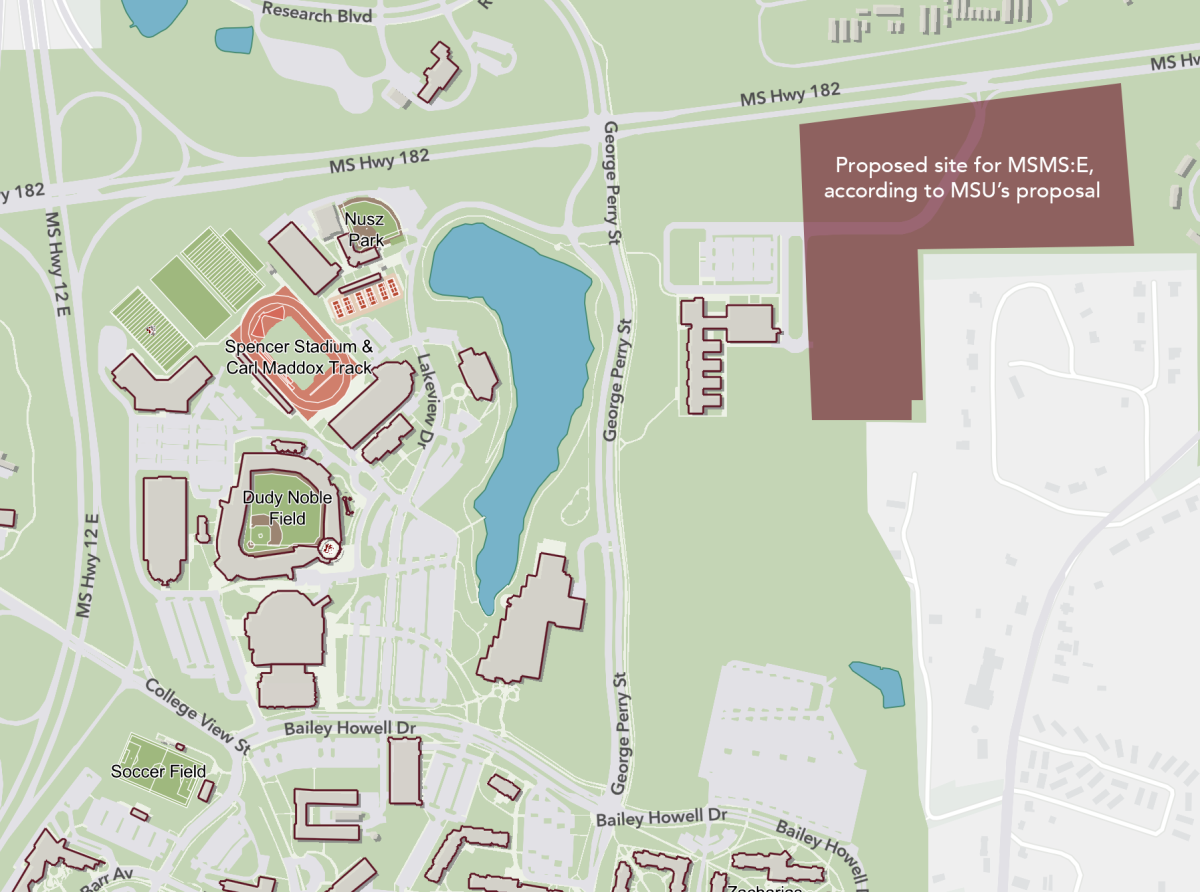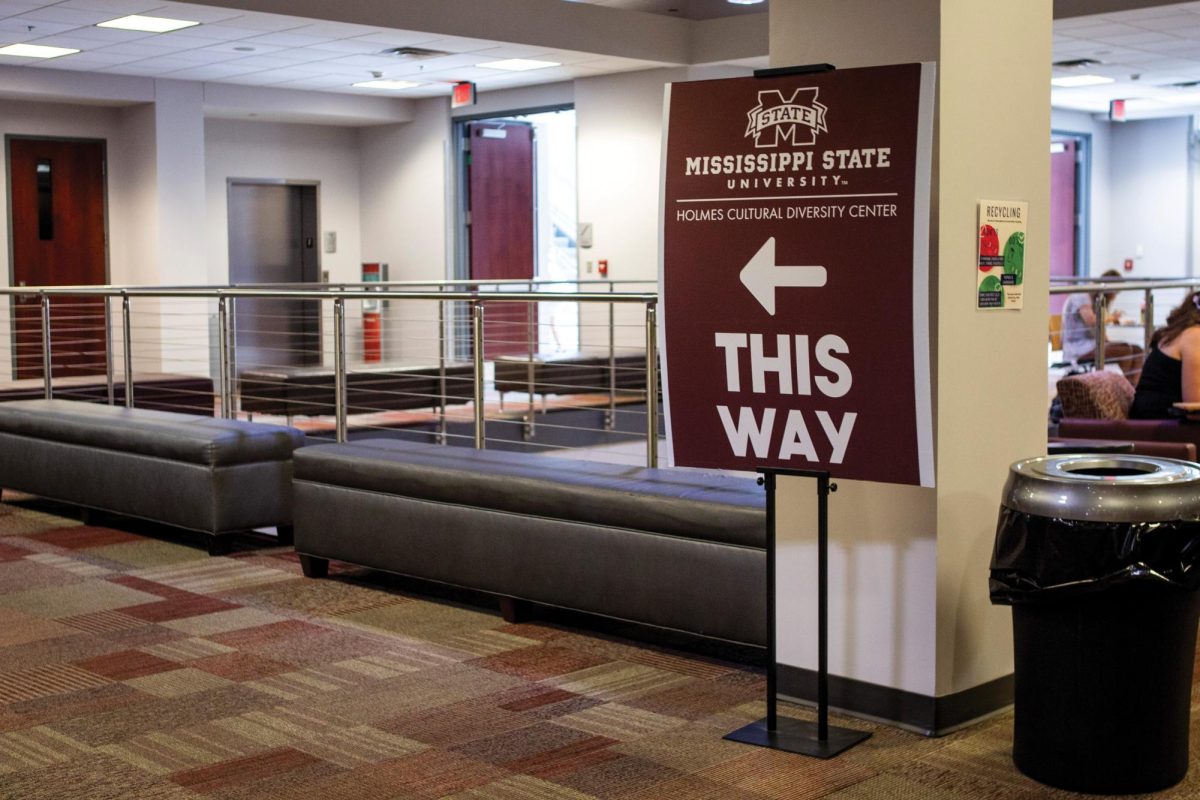The emerald ash borer, an invasive beetle responsible for destroying millions of U.S. ash trees, is encroaching on Mississippi’s forests.
This metallic green insect was first detected in Michigan in 2002, likely coming from Asia as a stowaway in packing materials and untreated wooden pallets. Since then, this tree-killing insect has been discovered in more than 30 U.S. states, causing widespread deforestation of ash trees.
Eric McConnell, a Mississippi State University professor in the Department of Forestry and researcher of the emerald ash borer, said entire forests have been destroyed by the beetle.
“In Ohio, the forests up there are, in some cases, 50 to 60 percent ash,” McConnell said. “You would ride down the road and see dead trees. Nearly all of it was ash trees.”
These insects lay eggs on the trees’ bark and, before long, larvae appear and bore into the inner bark of the trees. This disables the trees’ ability to transport water and nutrients. When the larvae emerge, they bore d-shaped holes in the trees’ bark as they travel into the forest to cause more destruction.
After the emerald ash borer leaves, the tree can take years to die. This makes it difficult to perceive the insect infestation.
McConnell also said that the emerald ash borer makes for a perfect stowaway in firewood and car grills, and in global trade, allowing the insect to quickly travel large distances.
Mississippi is one of the few southern states that has not reported the presence of the emerald ash borer, despite being discovered in bordering states. However, Joshua Granger, a professor at the MSU Forest and Wildlife Research Center, suggests that this statistic might be slightly optimistic. Granger said that there is a large chance that the beetle has already made a home in Mississippi and has simply not been found in the state’s vast forests.
Proportionally, ash trees make up a smaller number in Mississippi’s forests compared to pine or oak. Granger said that because of this, Mississippi residents may not notice or raise any concerns regarding ash trees dying. This may hinder the search for the emerald ash borer.
Mississippi researchers have captured the emerald ash borer outside Mississippi by placing traps in ash forests. MSU Department of Forestry professor Ashley Schulz said that these traps are large, purple and laced with pheromones that attract the critters.
One way the emerald ash borer is introduced into new areas is when campers bring infested firewood into unaffected forests. Granger believes the reason the invasive insect has not yet been discovered in Mississippi is because few people travel to Mississippi to camp. The lure of camping in the mountains of Colorado or the coast of South Carolina is evidently more tempting than the forests of Mississippi.
The U.S. Department of Agriculture has battled against the dangers of foreign firewood through its “Buy it Local. Burn it Local.” campaign. However, Schulz said the campaign did little to stop the emerald ash borer’s relentless march across the eastern United States.
Granger said that the U.S. Department of Agriculture has also attempted ash quarantines. If the invasive insect was found within a state’s county lines, landowners would not be able to move that lumber anywhere. This, too, was ineffective.
“The federal government deregulated it. They’ve pretty much given up,” Granger said. “There’s no litigation to contain it. Landowners, if they have ash, will move it as soon as the market will allow them to. They sell as much as possible.”
Granger said that despite Mississippi’s success in keeping the emerald ash borer at bay, it is only a matter of time before the insect is detected inside state lines.
The Mississippi Department of Agriculture and Commerce cannot issue regulations against the emerald ash borer until it is officially discovered in the state. McConnell said that education about the signs and symptoms of infestation, particularly for private landowners, can help identify the beetle in Mississippi.
MSU’s campus is home to two of the six species of ash trees found in North America. The largest tree on campus, rooted in its grandeur in the middle of the Junction, is an example of an ash tree at risk of being lost to the emerald ash borer.
Regardless of the deforestation caused by the beetle, McConnell said that there remains a glimmer of hope for the ash trees in North America. In Asia, where the insect originated, ash trees are now more resilient to the emerald ash borer.
“The emerald ash borer and the ash tree evolved together,” McConnell said.
McConnell further stated that the insect “will damage the ash tree, might even kill a few, but the ash and the beetle have coexisted for years.”
In North America, the small number of ash trees that survive these mass deforestations are called “lingering ash.” McConnell said that scientists hypothesize that these trees might have the genetics to be resistant to or even repel the emerald ash borer.
McConnell also said that another reason for these lingering ash might stem from what makes them so destructive — the emerald ash borer is moving so fast across forests that they miss a few ash trees.
The ash tree in The Junction is the largest tree on the MSU campus. The emerald ash borer presents a risk to ash nationwide.














